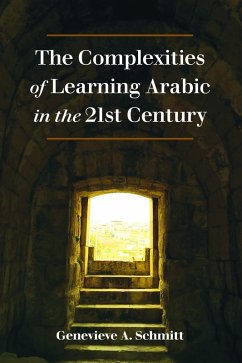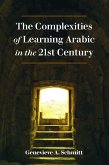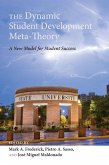The Complexities of Learning Arabic in the 21st Century examines how of the four levels of difficulty and hundreds of languages spoken worldwide, Arabic is considered a category 4, which means it is among the most difficult languages to learn. While Modern Standard Arabic (Fusha) is most frequently taught, it is the native language of no country or people; however, the many regional dialects (Amiyya), often dismissed by educators, make up the living language of Arabic. Due to its linguistic complexities, educators are divided on how to teach Arabic in domestic language programs in the United States and in study abroad programs in the Arab world. An investigation into programs catering to Americans learning Arabic as a foreign language revealed a heavy emphasis on reading and writing in MSA, but scant attention given to speaking and listening in the real language of the people-dialects. In Complexities of Learning Arabic in the 21st Century, recommendations are made for improving pedagogy and materials so that students can gain genuine communicative competence in Arabic, which means not only understanding MSA, but also speaking and listening in at least one dialect, the language of the people.
Dieser Download kann aus rechtlichen Gründen nur mit Rechnungsadresse in A, D ausgeliefert werden.
"Written by an advanced learner of Arabic and a thoughtful scholar with intimate knowledge of the topics covered, The Complexities of Learning Arabic in the 21st Century makes for a fascinating, lively, and easy read. This is a very useful book for American college students learning Arabic, as well as-and especially-for their teachers. It is intended to bridge a gap between educators and students, and makes a valiant effort toward that aim. Both novice and advanced learners of Arabic, and budding and seasoned teachers and professionals in Arabic pedagogy will find this text quite informative. The book is informed by solid research and is rich in information, data, and history. I will use it as a supplementary reading in all my Arabic language courses." -Dr. Maher Awad, Senior Lecturer of Arabic, Rice University









